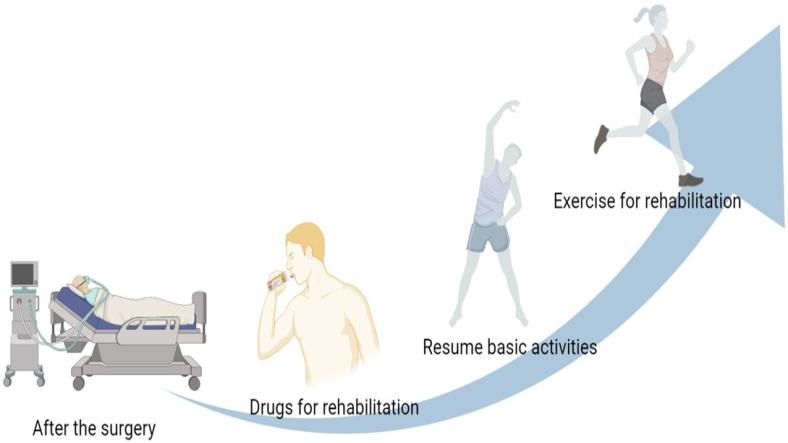Undergoing surgery is often just the beginning of a patient's journey to recovery. What follows—post-surgical rehabilitation—is equally vital to ensure full healing, restore function, and improve quality of life. Post-surgical rehabilitation programs are structured, individualized plans that guide patients through recovery, aiming to minimize complications, regain strength, and help them return to normal activities faster and safer. These programs are a cornerstone of modern healthcare, playing a crucial role in achieving successful surgical outcomes.
What is Post-Surgical Rehabilitation?
Post-surgical rehabilitation is a recovery program tailored to each patient’s specific type of surgery, health condition, and personal goals. It typically includes physical therapy, occupational therapy, pain management, nutritional support, and psychological care. These components work together to promote healing, reduce pain, and restore physical and mental well-being.
Why Post-Surgical Rehabilitation Matters
1. Speeds Up Recovery
- Rehabilitation accelerates the healing process by promoting circulation, reducing inflammation, and gradually restoring mobility and strength.
- Early movement and guided exercises help prevent complications such as blood clots, stiffness, and muscle atrophy.
2. Improves Surgical Outcomes
- Patients who undergo post-operative rehab often have better long-term outcomes.
- It supports optimal healing, reduces the need for re-operations, and helps patients regain full function of the affected area.
3. Reduces Risk of Complications
- Rehab programs help prevent common post-surgical issues like infections, pneumonia, or joint stiffness.
- Therapists monitor recovery and can alert doctors to early signs of complications.
4. Manages Pain and Discomfort
- Pain management techniques, including therapeutic exercises, massage, and modalities like ultrasound or electrical stimulation, are often part of rehab.
- These help reduce dependency on pain medications and support a smoother recovery.
5. Restores Independence
- Rehabilitation helps patients relearn or adjust to daily activities, promoting a return to independent living.
- Occupational therapy can be particularly helpful in adapting the home environment or teaching new strategies for routine tasks.
6. Boosts Mental Health
- Surgery and recovery can be emotionally challenging.
- Rehab offers psychological support and structured activity, which can reduce anxiety, depression, and feelings of helplessness.
Common Surgeries Requiring Rehabilitation
- Orthopedic Surgery Surgeries like knee replacement, hip replacement, or spinal surgery typically require extensive physical therapy to regain movement, strength, and balance.
- Cardiac Surgery Cardiac rehab includes monitored exercise, education, and counseling to help heart surgery patients improve cardiovascular health and prevent future issues.
- Neurological Surgery After brain or spinal cord surgery, rehab focuses on restoring motor function, speech, and daily living skills.
- Cancer Surgery Rehab after tumor removal or reconstructive surgery can help with pain management, mobility, and coping strategies.
- Abdominal or Thoracic Surgery Breathing exercises, core strengthening, and mobility work help patients recover lung capacity and movement.
Components of a Post-Surgical Rehab Program
- Physical Therapy (PT): Helps restore physical function, mobility, and strength through guided exercises and movements.
- Occupational Therapy (OT): Teaches patients how to safely perform everyday activities and promotes independence.
- Pain Management: Involves both physical and medical techniques to control discomfort.
- Nutrition Counseling: Ensures the body receives the nutrients necessary for healing and energy.
- Psychological Support: Addresses the mental and emotional aspects of recovery through counseling and support groups.
- Education and Self-Care Training: Patients and families are taught how to care for wounds, use assistive devices, and monitor symptoms at home.
The Role of a Multidisciplinary Team
Post-surgical rehabilitation is most effective when delivered by a team of specialists, including:
- Physical and occupational therapists
- Physicians and surgeons
- Nurses
- Nutritionists
- Psychologists or counselors
This team works together to customize a recovery plan and adjust it as the patient progresses.
Challenges in Post-Surgical Rehabilitation
- Limited Access: Not all patients have access to high-quality rehab due to geographical or financial barriers.
- Patient Compliance: Motivation and commitment can influence how well patients follow through with their programs.
- Insurance Coverage: Rehabilitation services may not be fully covered by insurance, limiting access for some.
The Future of Post-Surgical Rehabilitation
Rehabilitation is evolving with advancements in technology and a greater focus on patient-centered care. Key trends include:
- Tele-rehabilitation: Virtual sessions and digital tools allow patients to access therapy from home.
- Wearable Devices: Track movement, progress, and recovery metrics in real time.
- Personalized Rehab Plans: AI and data analysis help tailor programs to each individual’s needs.
- Robotic-Assisted Therapy: Devices that help patients perform precise movements during recovery.
Conclusion
Post-surgical rehabilitation is not just a supplementary step—it is an essential part of the healing journey. A well-structured rehab program improves recovery speed, reduces complications, and restores both physical and emotional well-being. By investing in rehabilitation, healthcare systems can enhance patient outcomes, lower readmission rates, and ultimately save lives. Whether you're recovering from a joint replacement or major surgery, rehabilitation is the bridge between surgery and a full return to life.
Thanks for reading the article, for more health related articles read our peoples blog articles.














